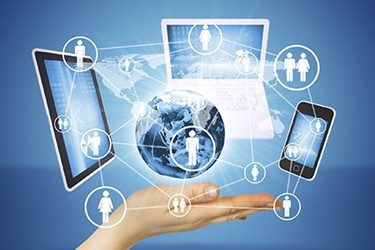Mobile Is A Healthcare Organization's Communication Lifeline During Blackouts
By Brad Brooks, TigerConnect

Catastrophic weather events and other natural disasters are a fundamental part of healthcare emergency preparedness and operations continuity. 2017 was the mostly costly year on record in the United States in terms of catastrophes, mostly due to Hurricanes Harvey, Irma and Maria, as well as the wildfires that torched large areas in the West and Southwest.
For healthcare providers, backup electrical generators serve as a lifeline to keep vital equipment and environmental systems operational during blackouts. However, not all systems, such as electronic health records (EHRs) and IT servers, are hooked up to these power sources. So where do care teams turn to when power, phones and computer terminals go down? The answer is mobile. That was a lesson that Kennedy Health (recently acquired by Jefferson Health), a multi-facility integrated healthcare delivery system in southwest New Jersey, recently learned when extreme winds knocked out power around its region.
Advancing Beyond Texting
Smartphones become the go-to communication tool when the power is out due to ongoing care needs that must be continued to protect patient safety, but also to free up beds and improve care access for patients who will inevitably arrive in the emergency department (ED) during a major weather event. However, without power care teams can typically only talk with or text each other through their personal smartphones because their devices are standalone systems not integrated with the EHR, lab, and radiology systems.
Conversely, if care teams are using a cloud-based, integrated mobile clinical communication platform, they can access needed data and collaborate across multiple specialties and services to move patients through the care episode.
This is not just isolated to major weather events. During a typical year, utility providers report at least one outage, which can last as long as three hours, according to a 2016 study. These outages can last much longer, as many of the more than 200 hospitals and nursing homes in Florida affected by Hurricane Irma recently experienced.
Lessons Learned
A severe thunderstorm tore through the mid-Atlantic states in late June 2015, bringing 85-mile-per-hour straight-line winds and knocking out power for more than 86,000 customers including Kennedy Health. Although backup generators fired up, its landline phones and computers were useless.
The year before the storm, the organization implemented a comprehensive, integrated mobile clinical communication platform integrated with its EHR system. The solution had already delivered significant workflow improvements before the storm arrived. For example, it was helping care teams communicate more effectively and efficiently to reduce ED utilization and hospital readmissions among frequent ED visitors, as well as improving care coordination among this high-need population.
The unexpected benefit discovered during the power outage was that the secure cloud-based server that hosted the clinical communication platform was still operational. Through their smartphones providers could seamlessly communicate using secure group text messages because their contact and schedule information was also accessible from the cloud. Once the messages were sent, providers could see who had received and viewed them through the app, which is carried an even greater significance during a hectic, unpredictable weather event and power disruption.
With the clinical communication platform at full functionality, the health system’s chief medical information officer and chief medical officer could also communicate with physicians around the area about their patients in hospitals and share updates about facilities. This helped coordinate care and protect patient safety, even with care teams dispersed throughout the area.
In short, even though the computers were non-operational, its mobile platform was. The care teams were informed about what was happening in real time, both with the weather conditions and patients. Even with limited electric power, Kennedy was able to deliver safer, better-informed care during a crisis situation.
Getting Better During Good Weather
Having a standalone, but integrated mobile clinical communication platform during a power outage is essential, however the technology also drives more efficient operations and improved care team collaboration during non-crisis situations, too. Why? Because care teams are mobile. Their data and communication tools must to move with them.
Providers need to access patients’ chart information, real-time test results, imaging studies, and other information from their smartphones regardless of their location. When that happens, consults occur, orders are entered and care is coordinated across multiple departments and facilities in minutes instead of hours or days.
During blackouts or not, healthcare organizations need to evolve their communication toolkit beyond antiquated landline telephones, pagers and whiteboards to a next-level system of record, display and action. With a mobile, integrated clinical communication platform that offers more than secure texting, healthcare organizations can offer truly efficient, patient-centered, coordinated care, regardless of the weather.
About The Author
Brad Brooks is founder and chief executive officer of TigerConnect.
